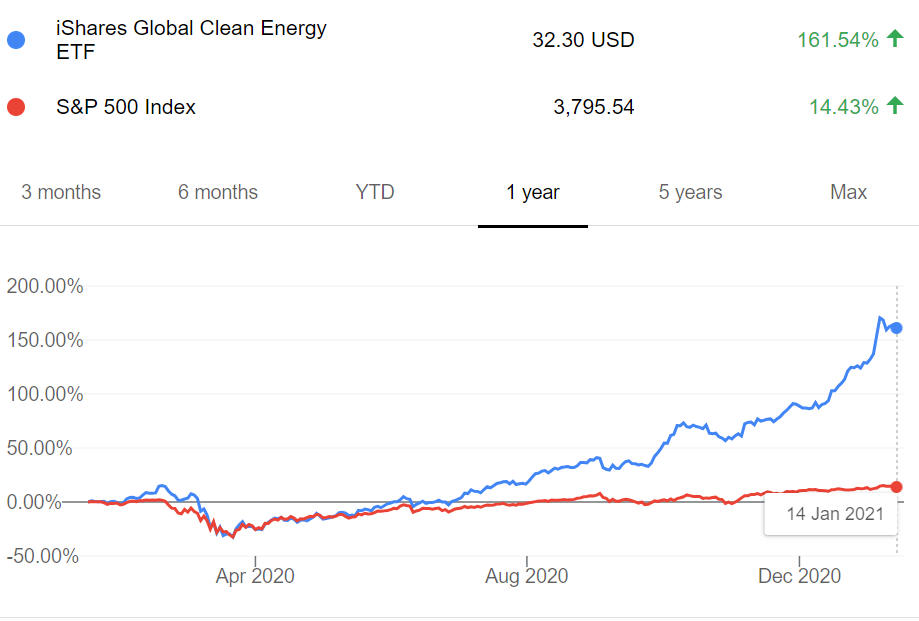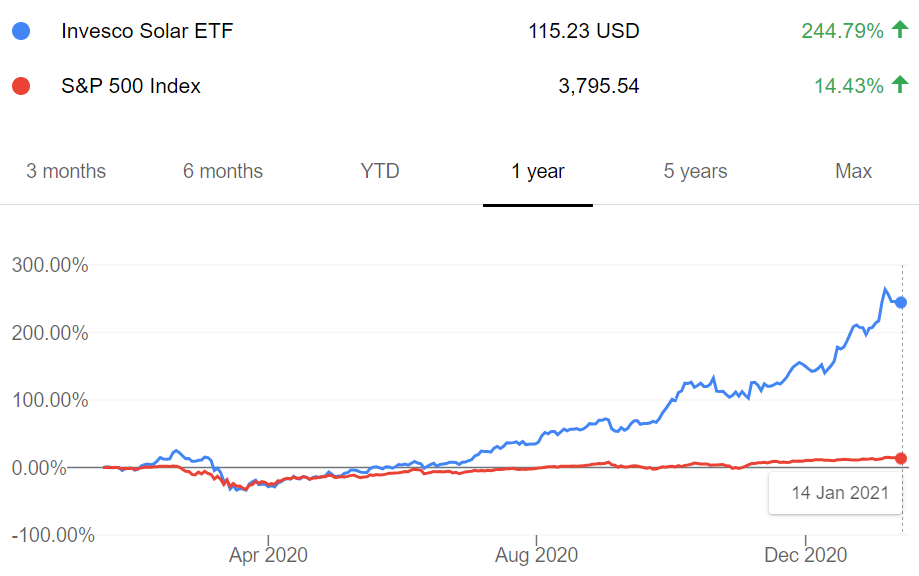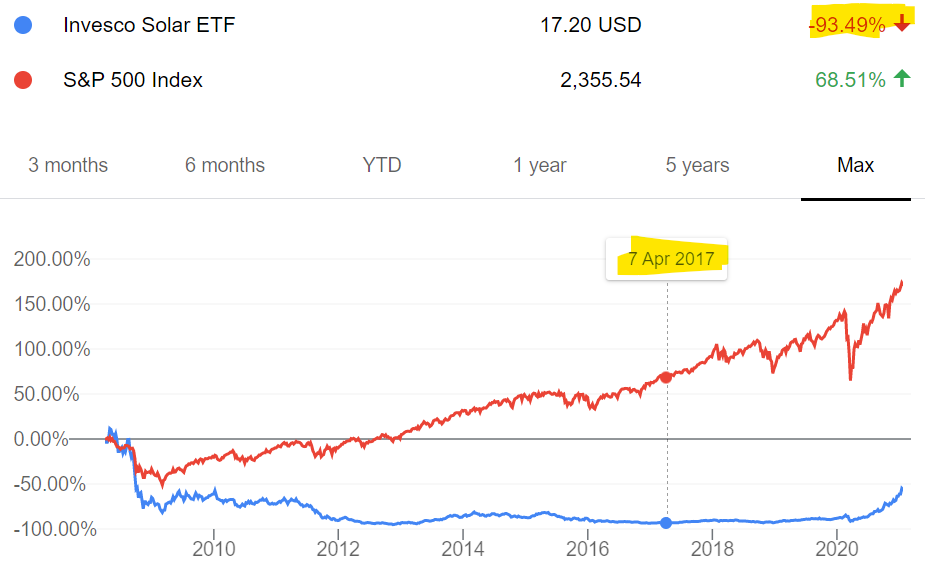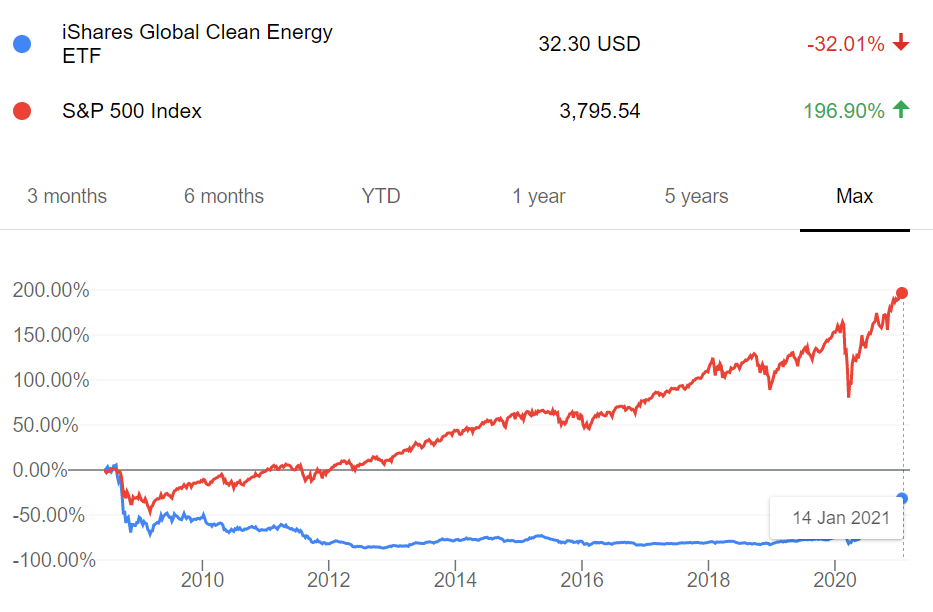Clean energy ETFs are on a tear globally. They have raked in billions in assets, crushed the market, and defined the news cycle this year.
Some have taken their strong showing as evidence of a paradigm shift in investing away from oil and coal companies and towards solar and battery technology. Others have taken it as a lesson that politics matters, given the timing of the rally with President-elect Joe Biden’s win in the US election.

But perhaps the best lesson is the importance of good luck and market timing. And that there is such a thing as being too early to invest in new technology, as well as too late.

Here, the two biggest clean energy ETFs from Invesco and BlackRock – the Invesco Solar ETF (TAN) and the iShares Global Clean Energy ETF (ICLN) – offer useful instruction.
ICLN and TAN have performed spectacularly the past year, easily beating the market.
But the two are old ETFs, with more than a decade of trading history. And zooming out on their performance, their results are a lot less bright.

TAN’s case is especially instructive. Since inception, the fund is still down more than 50%. At its worst – in April 2017 – investors who bought in at inception would have seen a decline of 94%.
ICLN offers a similar story. While its performance this year has been truly stunning, it is down since inception as well.

There is a lesson here, I suspect. And it is that picking stocks is not like arriving at dinner parties. In picking stocks, being too early to pick a trend can be worse than being too late.




